The ASUS ROG Crosshair VIII Impact: A Sharp $430 Impulse on X570
by Gavin Bonshor on October 25, 2019 11:30 AM ESTVisual Inspection
The ASUS ROG Crosshair VIII Impact is a mini-DTX motherboard which retails for $430 and represents the high-end small form factor X570 market. What it lacks in size, it makes up for in some very creative and interesting space-saving methods to include some of its core features. Around the sides of the AM4 CPU socket is a stacked PCB with plenty of well-utilized space. This coupled with a sleek all-black design across the rear panel cover, heatsinks, and the PCB make this a very color neutral looking board. There are some integrated RGB LEDs on the right-hand side of the board which isn't as extensive as some other ASUS ROG models of late, but the subtly is actually a strong point in terms of aesthetics.
Using the mini-DTX form factor over mini-ITX has allowed ASUS to feature its SO-DIMM.2 slot abouve the main PCIe slot. This allows users to install up to 2 x PCIe 4.0 x4 M.2 drives in a handy compact shell which does incorporate a heatsink for each drive on either side of the card. Further to the M.2 is four SATA ports with two right-angled, and two straight-angled ports which support RAID 0, 1, and 10 arrays. Below the SO-DIMM.2 slot is a full-length PCIe 4.0 x16 slot, with both slots being lathered in a metal coating to reinforce and protect the slots from physical damage. Along the bottom of the PCB are a right-angled USB 2.0 header, a right-angled front panel header, and a small overclockers toolkit which is located in the bottom right-hand corner.
Memory support on the ROG Crosshair VIII Impact is impressive with support for DDR4-4800 out of the box and has support for up to 64 GB across the two available slots. Motherboards with two memory slots are commonly used by overclockers to push memory clock speeds with tighter timings with shorter traces which can enhance memory speeds. This is one of the main reasons extreme overclockers tend to favour models with two memory slots such as the ASUS ROG Maximus X Apex, and previous versions of the Impact series. A total of three 4-pin fan headers are present with one set aside for a CPU fan, one for a water pump, and another for a chassis fan; the ROG SO-DIMM.2 integrates a further two 4-pin fan headers onto it so it does provide more functionality. It also has an addressable RGB header which complements the single addressable RGB header located on the PCB
The power delivery on the ASUS ROG Crosshair VIII Impact is using a 10-phase configuration with an ASP1405I which is a rebranded Infineon IR35201 PWM controller. This controller operates in 4+2 mode, which would normally mean we expect to see doublers in play. But for the Impact series, ASUS is doing something very clever - they are able to double the phase count without using additional hardware by teaming the phases. There are tradeoffs with this design, as it requires initial high frequency signal duplication from the controller rather than splitting a signal with a doubler, and ASUS believes if gives them both an operational advantage and a cost advantage. (Note, this is different to just doubling components in series, ASUS does have a true parallel phase design in play).
For power delivery, The CPU section is using eight Infineon TDA21472 70 A power stages which are teamed for better transient response and improved efficiency. Each power stage is accompanied by an inductor and has its own aluminium polymer capacitor on the rear of the board with a further four located on the front side of the PCB.
The eight power stages are cooled by a well-built aluminium heatsink which is assisted by a 30 mm fan integrated into the rear panel cover; one 30 mm fan is directly focused onto the power delivery and one on the X570 chipset. This is incorporated into the design of the rear panel cover and comes off the board in a single piece. It's a clever way of maximising the lack of space available.
On the rear of the PCB is a metal backplate which incorporates a heatsink which covers the rear-mounted SoC power delivery. In a slight design twist, the SoC section consists of two Infineon TDA21472 70 A power stages are actually located on the rear of the PCB. These are operating individually and makes the Crosshair VIII Impact's power delivery a +2 design. The heat pipe built into the backplate isn't just cooling the SoC section, but it also covers the rear of the 8-phase CPU area for better thermal performance; something a lot of vendors don't cater for on its enthusiast-level models.
On the side of the board is the 'overclocker's toolkit'. This toolkit is designed for extreme overclockers and enthusiasts looking to push the envelope of the Ryzen 3000 processors with sub-ambient cooling methods such as liquid nitrogen and dry ice. Users looking to bypass certain AMD power and voltage restrictions can use the LN2 mode via the jumper, but this is not recommended unless you are proficient and plan to do some serious overclocking. Misuse of this can severely damage componentry and will instantly void the warranty. A small safe boot switch allows extreme users to automatically force the system to enter into safe mode which can be handy for failed overclocks and helping to resolve POST issues. The OC Retry switch is similar to the safe boot button but instead lets users retry failed overclockers which hang during the POST phase and can be very handy for quicker memory training when doing memory overclocking. Above the switches is a slow mode dip switch which allows users to have an element of control over clock speeds which can allow systems to start off at minimum clock speeds, and then re-apply them when the system has gone through stressful stages of POST which can sometimes crash when clock speeds are too intense for the system to handle.
ASUS has decided to opt for a different approach to its implementation of the onboard audio on the ROG Crosshair VIII Impact with its audio componentry on an M.2 card which slots into the only onboard M.2 B-key slot located just below the full-length PCIe 4.0 x16 slot. This add-on card isn't designed to be removed and is an ingenious way of saving some space while isolating the audio PCB from the rest of the board's internal componentry. The M.2 audio card includes a SupremeFX S1220 HD audio codec with an EMI shield, an ESS ES9023P DAC, a front panel audio header, and has seven gold Japanese audio capacitors. It is covered up with a subtle black ROG themed metal fascia so that the audio PCB is hidden from sight, and is one of the most unique ways we've seen to implement onboard audio.
The Impact has one of the most equipped rear panels for USB connectivity compared with other small form factor models on X570 with five USB 3.1 G2 Type-A, a single USB 3.1 G2 Type-C, and two USB 3.1 G1 Type-A ports. There are two antenna ports for the Intel AX200 Wi-Fi 6 802.11ax wireless interface, while the single Ethernet port is controlled by an Intel I211-AT Gigabit controller. Also featured is a reset CMOS switch, a Q-Code LED debug, and a USB BIOS Flashback button. A SupremeFX S1220 HD 8-channel audio codec powers three 3.5 mm audio jacks and S/PDIF optical output is assisted by an ESS ES9023P HD DAC.
What's in the Box
Included in the accessories bundle of the ROG Crosshair VIII Impact are four SATA cables, a user manual, two M.2 screw kits, the ROG SO-DIMM.2, an Intel AX200 wireless antenna, a ROG panel cable, and a chipset driver installation disc. There are also some non-hardware specific items included such as a ROG branded coaster, a ROG thank you card and a large ROG sticker sheet.
Nestled in the accessories bundle is the ROG SO-DIMM.2 which has slots with support for M.2 2280 PCIe 4.0 x4 and SATA drives; one on either side of the module. Each side has its own individual heatsink. Due to the design and how tall the SO-DIMM.2 is when installed, it should theoretically benefit from chassis with good passive airflow. Also included on the SO-DIMM.2 is two 4-pin fan headers and an extra addressable RGB LED connector. At every turn, ASUS is making use of space where it can.
- User manual
- Chipset driver support CD
- 4 x SATA cables
- 2 x M.2 screw kits
- Large ROG sticker sheet
- Intel AX200 Wi-Fi antenna
- RGB extension cable
- ARGB extension cable
- ROG panel cable
- ROG coaster
- ROG thank you card
- ROG SO-DIMM.2 module


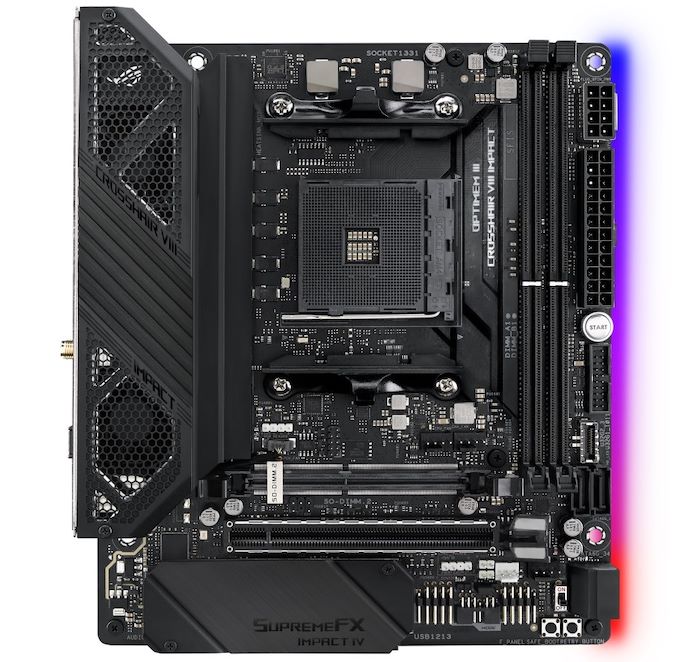
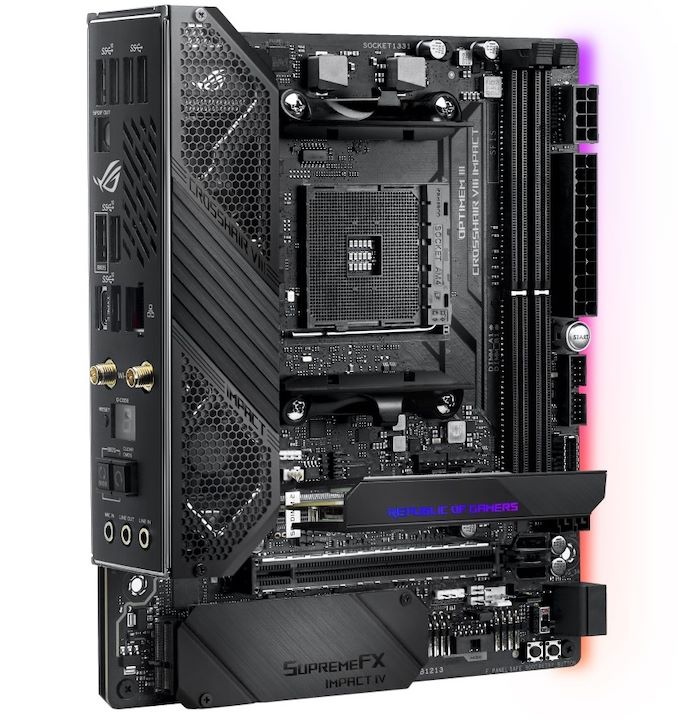
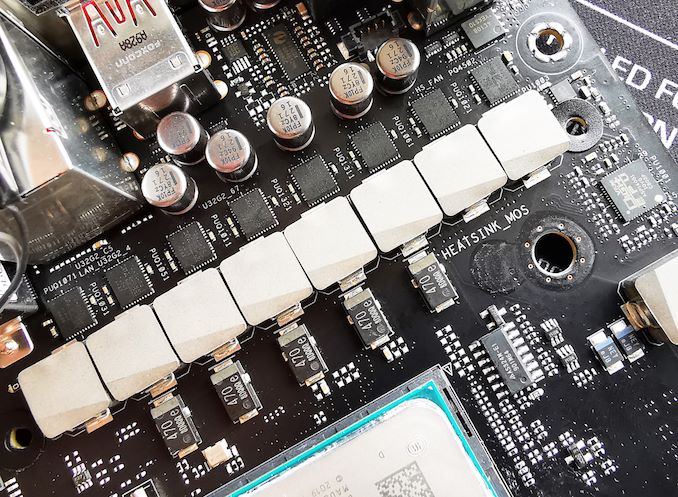
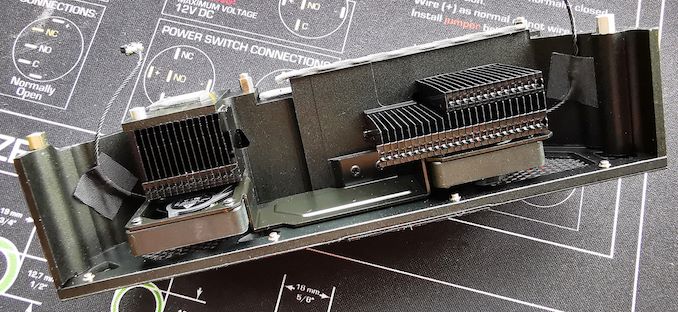
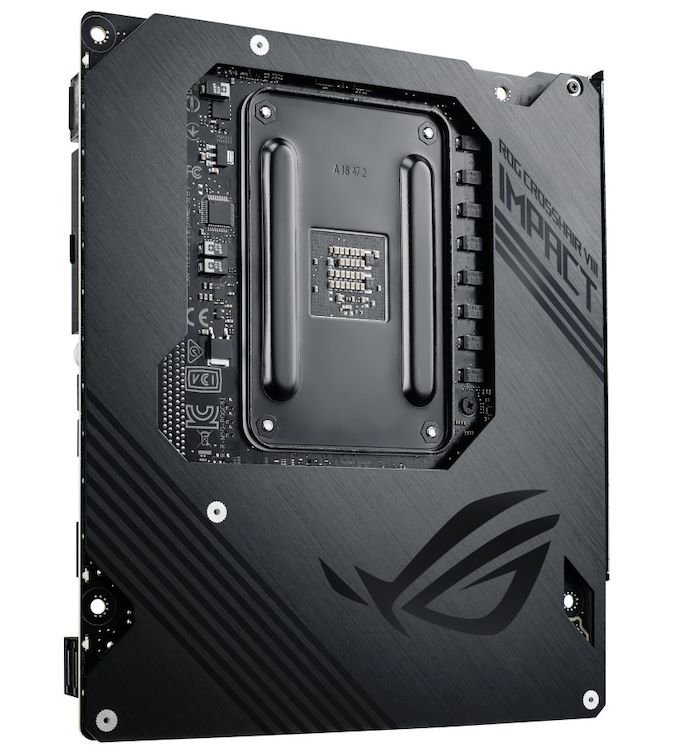
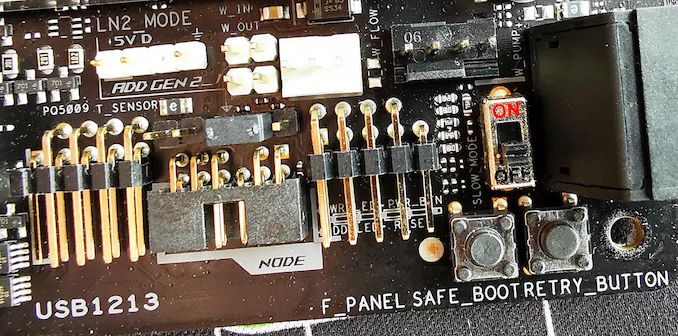
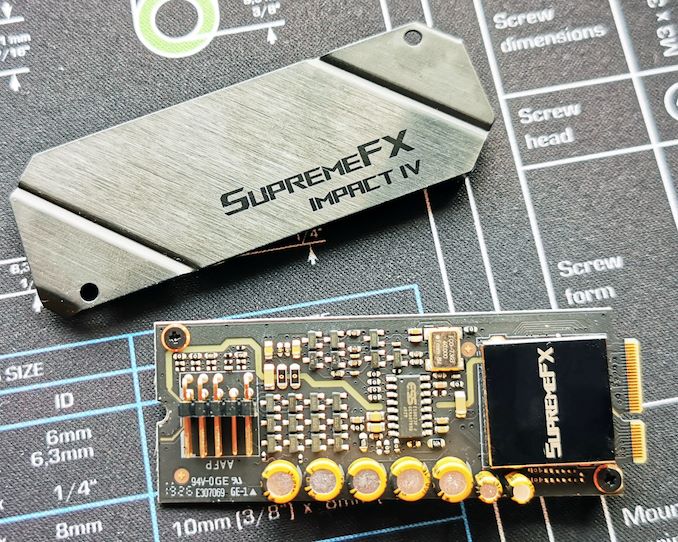

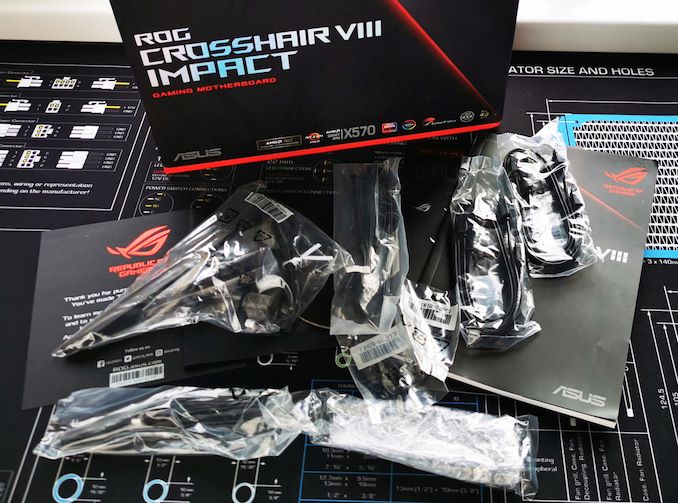









59 Comments
View All Comments
evernessince - Saturday, October 26, 2019 - link
It's the same people complaining on every article about the same issue, despite the fact that they've been told time and time again that these fans run at low RPM or off completely when you are not pushing the IO heavily. For most people, they are inaudible 100% of the time. These people want to spin their narrative, not try to understand what people are telling themHardwareDufus - Friday, October 25, 2019 - link
I won't say that I'm disappointed. I like Zen2.... but I will do just one more cycle of waiting.... I want to see the Zen3 successor to the Ryzen 9-3950X... and the RDNA 2 successor to the Radeon RX 5700 XT. That's all probably 12-15 months away, but that's just about right. I too am on an I7-3770k (longest lasting CPU I have ever had as well). This will be the last machine I build of my professional working career (If I've gotten 7+ years out of my I7-3770k, I'm sure I'll get 5 years out of the Zen3 16core CPU).hmmm, my trusty SilverStone SG055BB is mini-ITX / mini-DTX compatible (I own two of them). However, I'd pay a max of $300usd for a board like this (even though admittedly it's just about the perfect board... optical audio out, wifi and 2 M2 slots for storage... I ALWAYS have two harddrives).
We will see if a successor to this board is available in 12-15 months when I make the Ryzen Zen3 & Radeon RDNA-2 jump.
I'll be fine if only PCI4 is supported at that point.... I won't hold off for PCI5 to be implemented.
Will be interesting to see if we start seeing 4TB M.2 storage devices at that point as well... and if 32GB Dimms at good speed will be more affordable. Yeah.. Looking at 16 Cores @ 4Ghz+, 2X32GB for 64GB of Ram, 2X4TB for 8TB of storage to drive 2 32" 4K monitors. Will be a nice rig for the sunset years of my IT career...
alufan - Saturday, October 26, 2019 - link
honestly I do not understand folks who say this you have a CPU that is in modern terms slow and a system thats the same AMD comes along with a really disruptive product that is leagues ahead of what you have and in its third generation yet still you want to wait !What the heck exactly do they need to do to get your buy in, if AMD didnt exist or bring Zen to the party intel would happily keep chugging out its same CPUs for the next 10 years, support the company thats brought the fight to them!
HardwareDufus - Sunday, October 27, 2019 - link
Well, I will build the new system with cash on hand... So I may have misrepresented why I will sit out...... It's just that in my budget at end of 2020/2021 will make room for my computer. By then it will be Ryzen Zen 3 Radeon RDNA-2 and I will be curious to see what they offer... That's all. If their release is stalled significantly... then I 12 months from now I will buy current gen Ryzen Zen 2 Radeon RDNA....and would be equally delighted to do so...HardwareDufus - Sunday, October 27, 2019 - link
But perhaps in that time.... we will see a X570 variant that won't require a fan.... again, won't be a show stopper, as the CPU and Video cards will have fans aplenty anyway.....evernessince - Saturday, October 26, 2019 - link
And yet all X570 motherboards either turn off the fan during low load or run at low RPM, making then inaudible.PeachNCream - Sunday, October 27, 2019 - link
Noise isn't the concern. Fan failure is what bothers the OP as indicated by noting fans are a regression in the movement toward fewer moving parts (which can suffer from mechanical failure). While noise might be a concern, broken little fans that are a PIA to replace are what have peoples' panties in a twist right now and we haven't seen any X570 motherboards operating long enough to get a good understanding of whether or not fan failures are going to be a problem or if, as you implied, they are generally not running to begin with (which begs the question why the motherboard manufacturers are adding them in the first place instead of using a more effective passive heatsink).Oliseo - Sunday, October 27, 2019 - link
But you're not interested in anything but laptops, I don't get why you're arguing with people about something you no longer care about.Just like arguing I suppose.
RavenRampkin - Sunday, October 27, 2019 - link
May I kindly take Peach's initiative? xDNot interested in laptops. Have one, it's fine. The current pricing situation is meh. 6/12 ultrabook and 8/16 laptop parts are crazy expensive. Graphics are expensive (Turing), boring (Turing GTX) or both (Radeon, sadly. Power hogs or underperformers, or both). Zen is a skillful fighter for new users but nothing of particular interest over a good ol' 4700MQ (minus the Vega... got a dGPU anyway)...
As for the fans, sorry bud. If the interested customer has to find ways in which a hackjob (just sry, this IS a hackjob... it's not 2005 anymore) doesn't svck (oh the fans are low RPM, oh they're not that short-lived, oh there's passive mode at 0.1% load) and is actually *not that bad*, then it's not really a good hackjob. The need for this dayum fan in the first place screams a littley oopsie from ASMedia, or a design less efficient than usual on AMD's side. OK higher demands than for 300 and 400 series, then why does Shintel get away without le fans? (Pls correct if wrong.) Also, you can still do it passive, funnily enough. Why should it be a blessing and not a default option?
Case in point right above (or below?) me. Adaptation 100. Spare me some lube guys, been shilling for AyyMD, AsRock, Powercolor and Seasonic long enough :P want to try out some other companies
TL;DR there's no advantage nor purpose in reinventing the sleeve bearing (or dual ball, depends) wheel.
AshlayW - Monday, October 28, 2019 - link
PCI express 4.0 has significantly higher power requirements and thus heat output. X570 chipset is a repurposed Matisse IOD. Why you people complain about the chipset fan is beyond me, always gotta complain about something I guess. It's completely bloody inaudible on my X570M pro 4, and also completely unnecessary for all but the most intense I/o on both gen4 m.2 and the GPU.Stop complaining.